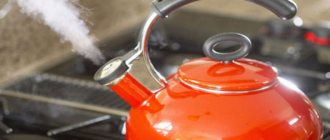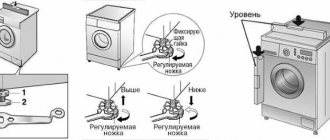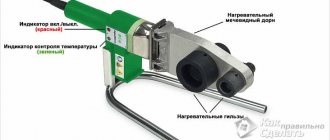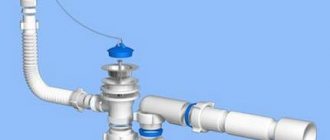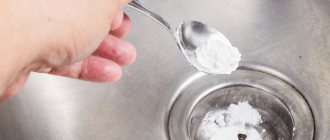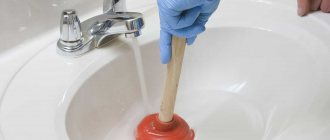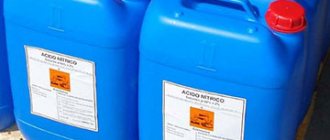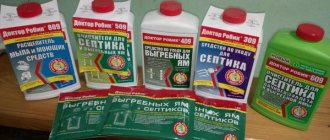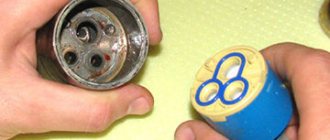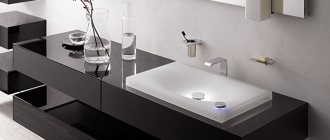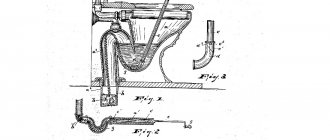Cast iron and steel bathtubs have been replaced by lightweight and comfortable acrylic counterparts, the thermal conductivity of which allows the water to remain at a high temperature for a long time. Modern modifications are equipped with hydromassage systems and antibacterial coating, which makes them even more attractive in the eyes of the consumer.
New models look flawless thanks to their smooth, shiny surface, but only proper care of an acrylic bathtub will help maintain its appearance in the future. Let's take a closer look at what products are suitable for cleaning acrylic products and what rules must be followed when caring for them.
What is acrylic
Victory over the enemy is achieved not only by fortitude, but also by knowledge of his strengths and weaknesses. This expression fully applies to the care of acrylic bathtubs. Without knowing the characteristics of the material and its weaknesses, it is impossible to understand what means can and should be used to clean a bathtub made of such an unusual material as acrylic. The term “acrylic” hides a range of completely different polymer materials made from methacrylic and acrylic acid: fabrics, glass, plastic.
Bathtubs are made from plastic. Acrylic bathtub has a smooth, shiny surface that is pleasant to contact. The material retains heat perfectly, is technologically advanced (you can get the shape of a bowl of the most bizarre shape), and durable.
At the same time, strength is not synonymous with the word hardness - the surface of the bathtub can be easily scratched, and with a concentrated impact it can be pierced through (a glass perfume bottle falling from a shelf is enough).
The material is afraid of hot water (above 85oC the plastic softens, deforming the walls of the bowl) and household chemicals containing:
- all types of chlorine - the surface, firstly, loses its shine and turns yellow, and secondly, it slowly deteriorates (pores are formed, shortening its service life);
- acetone - corrodes plastic, the first sign of which is its cloudiness. 10 ml of acetone is enough to make a dent;
- ammonia (almost all types of bleaches) - destroys the molecular structure of the material;
- formaldehyde in its composition is incompatible with all types of acrylates;
- alcohols, alkalis, acids melt acrylates.
Therefore, it is important to take into account all the above nuances of caring for an acrylic bathtub so that it serves for a long time, delighting its owners. Let's talk about the features of care in detail.
Is it possible to wash an acrylic bathtub with Domestos?
Considering that this is one of the most common and advertised cleaning products in the CIS, this question torments more than one housewife. In general, yes.
Domestos Ultra White for baths and toilets
But, there are a number of rules on how to wash an acrylic bathtub with Domestos and not spoil it:
- Domestos should not be left for long periods of time. It contains such strong acids that they can easily corrode even vitreous enamel, not to mention the dyes that are used for plastic. The maximum exposure time of the product is 10 minutes;
- How to use it: you need to apply a cleaning agent to the upper part of the wall and spread it with a sponge over the entire wall. All work must be done with gloves, otherwise allergies may develop. Afterwards, you need to leave Domestos on the acrylic for up to 10 minutes, wipe with a sponge again and rinse off;
- To consolidate the effect and give the bath shine, it is also treated with a wax-based polish. This is completely harmless; after such cleaning, you and your children can bathe.
Bathroom care equipment
To wash dishes or a cast-iron bathtub, the entire range of equipment is used, starting with a foam sponge and ending with a metal sponge. The low-hardness acrylic surface of the hot tub can be scratched even by a toothbrush with medium-hard bristles. Therefore, there is a categorical prohibition (taboo) for caring for plastic hot tubs:
- on metal brushes and with hard bristles;
- metal scrapers and scourers;
- sponges with abrasive applied to one side;
- melamine sponges (surprising but true).
You can clean an acrylic bathtub using:
- sponges made of foam rubber, cellulose;
- fabric napkins;
- rags with soft pile (flannel, microfiber) - this is what the manufacturers advise. In principle, any non-abrasive fabric will do.
Rules for proper use
The bath does not require serious care, but it is still necessary to follow the rules.
- Periodically bringing the plumbing to a decent condition in 5 minutes - after water procedures, rinse with clean water . Acrylic does not absorb dirt, so this type of washing is sufficient.
- After use, wipe the bathtub with a sponge and soapy water . Next, dry to avoid streaks.
- restoration kits for removing scratches - they are sold in hardware stores.
How to clean an acrylic bathtub
To care for acrylic bathtubs, you can use household chemicals, which are sold in a fairly large assortment in all retail outlets, from specialized stores to hypermarkets, or folk remedies that are not inferior in effectiveness to chemicals.
Household chemicals
When buying a product for an acrylic bathtub in a retail chain, you need to follow a few simple rules.
1. The product must, firstly, be suitable for acrylic, and secondly, for the type of contamination that has formed.
2. Detergent must be purchased in the form of a liquid, spray, cream, paste or gel (no powders). In this case, it is necessary to take into account some features of the release form:
- the solution is cheap, removes dirt perfectly, but also runs out very quickly. Therefore, when purchasing, you should calculate what is more profitable financially;
- Due to its thick consistency, the gel is more economical to use: it is easy to apply and distribute, but it also costs an order of magnitude more;
- The spray is easy to apply even in hard-to-reach places, is used economically, and can easily cope with heavily soiled areas. Prices are mainly related to quality;
- pastes and creams. They cost more and do a worse job of removing old stains. Otherwise, there are no complaints from consumers: they are easy to use and provide delicate cleaning.
3. Household chemicals should not contain: abrasives (paste is a sin), strong acids, caustic alkalis, chlorine, etc.
4. The pungent odor may cause allergic reactions. Recently, buyers have been paying special attention to this feature - products with a pleasant aroma are in demand.
5. Disinfectant additives are desirable in the detergent, which will eliminate the need for a special procedure for disinfecting the hot tub.
There are many ratings of detergents for acrylic bathtubs. They are all different - there are practically no repetitions. Therefore, the editors of the StroyGuru.Com website decided to compile their list of the most effective household chemicals for cleaning acrylic. And this is what happened:
"Akrilan" is a universal foam detergent. Sold in white 400 ml bottles. It removes lime deposits and rust well. Gives the surface shine, protects against bacteria (has disinfecting properties).
Method of use:
- sprayed onto a contaminated surface (it begins to foam on acrylic);
- after 1-2 minutes it is washed off (the manufacturer warns that the foam should not be allowed to dry);
- The bathtub is wiped with a dry cloth.
Flaws:
- high cost - more than 300 rubles. per bottle;
- wasteful consumption;
- is not able to remove mold embedded in the sealant.
“Cif” is a cleaning product well known to most Russians for the care of kitchen utensils. In the diverse line of creams and sprays, a preparation has also appeared for cleaning acrylic bathtubs.
The product has many advantages:
- economical consumption;
- nice smell;
- affordable price;
- excellent cleaning properties against all types of dirt, but only fresh ones.
Among the disadvantages:
- It doesn’t wash off well - you need to go over the entire bowl at least 3 times until all the foam is gone;
- does not pick up heavy dirt such as limescale and mold.
"UNICUM". Available in spray form to combat lime, rust and mold. According to reviews on the forums, this is one of the best tools:
- economical to use;
- fast-acting - 15-20 seconds is enough. and can be washed off;
- has disinfecting properties;
- with a low price - a bottle can be bought for about 170 rubles;
- copes well with old stains, but for this you need to wash it off a little later;
- After treatment the surface gives it shine.
Disadvantages, if any, were not cited.
“Mr. Cleaner” is literally a universal remedy: it removes not only possible types of contamination from the bowl, but also washes everything that is in the bathroom (ceramics, metal parts of plumbing equipment, etc.).
Has antiseptic properties. Creates a polymer film on the surface that protects plumbing fixtures from contamination. Action time is about 10 minutes.
The weaknesses of the product include:
- the presence of a chemical smell, which, however, quickly evaporates;
- poor ability to wash away stubborn stains and rust.
A bottle with a capacity of 500 ml can be bought for 150-165 rubles.
“Cinderella” is an inexpensive (RUB 30-60) cleaning agent that effectively cleans acrylic surfaces of all types of contaminants. Unfortunately, the name matches the essence due to the pungent smell - it is very difficult to work without a special mask.
There are no comments regarding other detergent evaluation criteria.
In addition, on the positive side the following are mentioned:
- “Maline” – designed to remove lime and soap deposits;
- “Gloss” () - created on the basis of citric acid, effectively fights limescale, rust and soap stains;
- “Tim-Profi (production) is a professional product for disinfecting and washing acrylic bathtubs from any old contaminants;
- “Meine liebe” - an eco-friendly product (quickly decomposes) to remove white deposits;
- "Mr. Muscle" and others.
Folk remedies
You can also clean the bath well using folk remedies.
Baby soap. Bathing the baby should be carried out in a sterilely clean bath, without any residues of detergents with aggressive components on the walls of the bath. Therefore, immediately before the water procedure for the baby, the bath should be additionally washed with baby soap.
Laundry soap. For daily cleaning, laundry soap copes well with all types of dirt. To do this, it is grated, diluted with water and stirred to a gel state. Add 1-2 tablespoons of baking soda to the resulting consistency and mix everything again until the sodium crystals are completely dissolved. This is true for all recommendations.
However, this order of work does not suit all housewives - it is long and painstaking. Therefore, they first quench the soda with a small amount of hot water, then add a little cold water and stir until the solids are completely dissolved. The resulting mixture is poured into grated soap and stirred until a thick, homogeneous slurry is formed. The surface of the font is wiped with the resulting composition, after which it is immediately rinsed. If the bathtub has already turned yellow, the applied composition is left on the acrylic for 15-60 minutes - during this time the soap has time to dissolve the resulting yellowness.
However, this product does little to help with stubborn rust and lime.
Liquid soap. For regular acrylic care, the most common option is liquid soap. You can also use washing gel or liquid dishwashing detergent. The main thing is that they do not contain components that corrode acrylic.
Cleaning is carried out as standard: the entire surface of the bowl is wiped with a sponge and detergent applied. After wiping, the bowl is washed with warm water and then wiped with a dry cloth.
Vinegar. Table vinegar, on the one hand, fights limescale better than any home remedy, but on the other hand, it can severely damage acrylic plumbing fixtures. Therefore, there are two cleaning options: quickly, with undiluted vinegar (heavily moisten a rag in vinegar, apply it to the dirty area and constantly pour warm water on it) or for a long time, but with a composition with a low concentration of cleaning agent - 1 liter of 9% vinegar is poured into a filled bathtub and left in it for 10-12 hours.
Citric acid (lemon juice). A solution of citric acid (lemon juice) perfectly removes limescale, rust, and dissolves fats. Therefore, with regular care, the product is one of the best. The cleaning itself does not require much time:
- 50 g of “lemon” (enough for weekly care) is dissolved in a small amount of warm water and poured into a filled bath;
- the water is mixed and then left for 10-12 hours;
- after a certain time, the solution is drained, the plumbing fixtures are washed, wiped with a dry cloth, and then polished with felt.
Soda. There are two types of soda: baking soda and soda ash. To care for the plastic hot tub, only the food version is used. There is an ambiguous attitude towards its use: some are categorically against it, which they write about on various forums on the Internet, others are in favor, citing their own experience.
In this dispute, those who correctly use the ability of sodium to break down fats and other organic compounds are most likely right. After all, you can’t wipe acrylic plastic with soda. Only apply the paste to contaminated areas or use a composition where solid particles are completely dissolved.
Here is one cleaning method:
- pour 2-3 tablespoons of soda into a deep plate;
- 200 ml (glass) of warm water is poured there;
- soak a rag with the resulting mixture, capturing undissolved soda;
- moisten the contaminated area with a damp cloth (just do not rub);
- After 15 minutes, the stain is washed and then wiped off.
Mustard. Mustard powder is used only in combination with baking soda. Used to treat yellow and rusty areas.
Hydrogen peroxide. Used together with vinegar, enhancing the cleaning effect. It is diluted in a ratio of 3:1, where 3 parts are vinegar, 1 part is peroxide.
Toothpaste. The best solution for cleaning acrylic is toothpaste. Moreover, not only among folk methods, but also among household chemicals. This phenomenon is explained simply: acrylic came to plumbing from dentistry.
But the effectiveness of the cleaning product depends on the cost of care. Therefore, the paste is used in exceptional cases, for example, for cleaning a painted surface with hair dye, gouache, and other dyes.
The method of use is simple: rub the paste into the painted area with your fingers, a rag or sponge. After a few minutes, the bathtub is washed and dried.
Attention: recently many types of pastes with abrasives have appeared for cleaning stones on tooth enamel. This paste should absolutely not be used. Since in most cases the manufacturer does not indicate the presence of abrasive particles on the packaging and tube, you can find out on your own by rubbing a little paste between your fingers. Hard particles will be immediately detected.
What is the acrylic surface afraid of?
Powders, creams and pastes, which we are used to using to tidy up cast iron and steel bathtubs, should not be used at all. The fact is that many of their components, which are safe for enamel, are considered too aggressive for acrylic.
At best, they will erase the shiny coating and leave scratches; at worst, they will completely destroy the structure of the material.
Acrylic bathtubs do not belong to the group of expensive products; more often they are products of the middle segment (except for elite models). For example, the BAS Fantasy model with hydromassage costs about 30 thousand rubles. – a budget option for a family with average income
For example, all-purpose cleaning powders and pastes often contain fine abrasives. The smallest solid particles do not leave marks on the enamel coating, but can ruin acrylic, which is sensitive to mechanical damage. Therefore, such universal products for the kitchen and bathroom as “Komet”, “Domestos”, “Silit” (powder) are prohibited.
In addition to abrasives, cleaning products should not contain the following ingredients:
- chlorine;
- formaldehyde;
- acetone;
- ammonia;
- oxalic acid.
Chlorine corrodes the material, making it porous and unsightly. Acetone, ammonia and some solvents destroy the shine of the coating, gradually destroying the top layer. Acids and formaldehydes are also incompatible with acrylic.
Relatively soft acrylic is afraid of hard and sharp objects. Please note that even such a sanitary measure as washing pets is dangerous for him, as their sharp claws can easily damage the coating. For such hygiene procedures, it is recommended to use a plastic basin or a specially installed tray with a separate shower.
If the damage to the bathtub turns out to be catastrophic, it can only be saved by restoration with liquid acrylic, which is carried out using special technology by professional plumbers
If you hand wash or clean bulky items in the bathtub, use a rubber mat. It will protect the bottom and walls of the container from damage that can be caused by metal buttons, fasteners or zippers. The same rug is an excellent stand for a plastic basin, which can also scratch acrylic.
Another threat to acrylic bathtubs is very hot water. It does not affect as clearly as sharp objects, but over time it destroys the top layer, making it more porous and weaker. As a result, all the negative contents of tap water - lime, rust, dirt - are absorbed into the acrylic and make the surface of the bathroom unattractive.
To ensure that the water contains fewer foreign impurities that negatively affect acrylic, fine filters are installed on the supply pipes. In the event of a water supply accident, they trap particles of clay, sand, and contaminants.
Now let's look at effective products for acrylic bathtubs, which are ideal for adding shine, removing scratches and regular maintenance.
Do I need to disinfect the bathtub and with what?
Enlightened site visitors may have a logical question: why talk about disinfecting plastic bathtubs if fungal growth is impossible on acrylic. This is true. But we must not forget about 2 things:
- The bathtub is simply rinsed after each use (only cleanliness fanatics wash), and cleaned when free time appears. The fungus reproduces well on plaque on the walls of the bowl (fats and various organic substances are an excellent nutrient medium). Therefore, if for some reason it was not possible to thoroughly wash the font for a long period (about a month), it is advisable to completely disinfect it;
- The fungus reproduces well on silicone sealant, which is used to seal the joints between the sides of the bowl and the walls or tiles.
To protect family and friends from contact with harmful bacteria, you need to regularly carry out disinfection measures. There are several ways to do this.
Method No. 1. Buy Domestos, but only without chlorine, Acrylight, Santekh or Acrylon. To make sure that the purchased gel (paste) is suitable for an acrylic bath, you need to conduct a small experiment on a small, inconspicuous area, because Not all disinfectant containers have a warning label about the presence or absence of chlorine. If no changes are observed, then you can begin sanitation:
- the surface to be treated is rinsed with warm water, including the sealant;
- the gel is applied to a cloth or sponge;
- the entire surface of the bowl and the sealant are wiped. At the same time, you cannot leave a visible layer of the substance - a concentrated gel even without chlorine can provoke the formation of difficult to remove stains;
- after 1-2 minutes, the applied product is washed off with hot (about 60oC) water;
- The bathroom is wiped dry. If this is not done, limescale will actively form in poorly washed areas.
Method No. 2. The bath is completely filled with warm water (20-25oC). Two 1 liter bottles of “Belizna” with a bleaching agent concentration of no more than 7% are poured into it.
This solution is left in the bowl for 10-15 minutes, after which it goes down into the drain hole. Water is poured into the bath again. Use a sponge or rag to wipe the walls and bottom of the bowl. The water drains again. The bath is rinsed with warm water and then wiped dry. The disadvantage of this method is the need for additional processing of the sealant.
Attention: if there is a baby under one year old in the house, disinfection is carried out at least once a week. After its completion, the walls are washed with baby soap.
Method number 3. You can use a steam cleaner - hot steam not only kills germs, but also removes dirt, restoring the shine to the surface. It is advisable to carry out this type of treatment once every six months. The only requirement: you can’t stay in one place for a long time. The surface can be melted.
How to disinfect
Disinfection is carried out in order to clean plumbing fixtures from various microorganisms that have a detrimental effect on humans. Fungi and fungus love moisture, and it is an ideal breeding ground for them, so appropriate measures need to be taken.
You can disinfect with a weak solution of “Whiteness”, soda (just do not rub), lemon juice, vinegar or laundry soap. To do this, the product is applied to the surface of the bath and left for 15 to 45 minutes. Then you need to rinse with water and wipe the bath with a clean soft cloth, which will add additional shine.
Recommendations for cleaning depending on the type of contamination
There may be various types of contaminants on the surface of the bowl. Each of them has its own detergents. For clarity, let’s summarize the problems that arise and how to solve them in a table.
Table 1. Types of contaminants and detergents to remove them.
| Type of pollution | Cleaning products |
| Yellowness | Toothpaste; hydrogen peroxide and vinegar; dry mustard (powder) and baking soda |
| White coating (lime) | Table vinegar (9%); baking soda; lemon acid |
| Rust | Lemon juice; Ammonia and hydrogen peroxide |
| Silicone sealant | Lemon acid; White Spirit; vinegar essence |
| Glue | Lemon acid |
Now let’s look in more detail at how to clean an acrylic bathtub from each type of contaminant.
Yellowness
A bathtub can turn yellow for several reasons: there is a lot of iron in the water; insufficient quality of cleaning was carried out at the disinfection station to remove chlorine impurities; irregular care was provided, etc. Therefore, it is first advisable to figure out why it turns yellow in order to use a cleaning agent that can solve the problem. If this is not possible, then you need to try using the recipes below one by one.
Recipe No. 1. Take hydrogen peroxide and table vinegar (9%) and mix in a ratio of 1:3. The resulting solution is poured into a spray bottle and sprayed onto the stain. If you don’t have a sprayer, you can apply the product to the yellowness with a sponge or soft cloth. After a quarter of an hour (15 minutes), the stain is thoroughly washed and then wiped dry.
Recipe No. 2. Mustard powder is mixed in equal proportions with baking soda and diluted with warm water to a paste. Apply to yellowed areas for 30 minutes, then wash off with warm water. The bowl is dried with a hairdryer or wiped with a dry cloth.
Recipe No. 3. The most effective, but at the same time the most expensive of the folk methods to remove yellowness and return the shine to the bath - toothpaste. She:
- perfectly removes yellowness, regardless of the source of formation;
- having a soft structure, it eliminates the risk of scratches during the cleaning process, compared to soda;
- does not contain aggressive substances, unlike vinegar and citric acid.
There are two methods for cleaning with paste.
Method 1. With this cleaning method, the paste is applied locally, only to damaged areas:
- toothpaste is applied in a thin layer to yellowed spots;
- after 5 minutes, the areas are wiped with a sponge;
- The cleaning agent is washed off with warm water, after which the font is wiped dry.
Method 2. If it is necessary to treat the entire surface, paste is applied to the sponge. After this, one zone is processed, for which the applied cleaning agent is enough. Having completed work with one portion of paste, the bath is washed with warm water, after which the procedure is repeated with a new area. And so on until the entire surface of the bowl is cleaned. At the end of the work, the font should be wiped with a dry cloth.
Limescale
You can remove limescale with a 9% solution of table vinegar. Considering that vinegar behaves aggressively towards acrylic, you need to pour it into a bathtub filled with warm water in a volume of no more than 1 liter and stir well. In this state, the bath is left for about 10-12 hours, no more. Otherwise, unwanted chemical reactions will begin. After the set time has passed, the water is drained, the bowl is rinsed first with warm and then cold water and wiped dry.
Many housewives add citric acid, soda or salt to the water along with vinegar. Such additives not only speed up the process of eliminating limescale, but also restore acrylic to its original shine. The only requirement: the crystals of the added substances must be completely dissolved in water.
Baking soda can also remove deposited limescale. But when using it, you need to remember that it is a good abrasive - it’s not for nothing that housewives use it to scrub the dirtiest kitchen utensils. Therefore, you need to handle it very carefully: either pour water into the bath, pour a pack of product into it, leave for 1 hour, drain the solution, rinse and wipe dry, or use it as a paste. But the latter option is only suitable for removing individual stains, which is rare.
The technology for getting rid of limescale with gruel is simple:
- soda diluted to the consistency of sour cream is applied to contaminated areas for 20-25 minutes;
- After the specified time, it is washed off with water, after which the bowl is wiped with a dry cloth.
You can also wash the font with citric acid. The method of application is similar to vinegar. To clean, you need 200 g of dry substance, completely dissolved in warm water - crystals that settle on the walls or bottom of the bath immediately react with acrylic.
Rust
Rust stains can be removed with lemon juice or a solution of ammonia and hydrogen peroxide.
Lemon juice. Freshly squeezed lemon juice is applied to the rust stain for an hour, no more. After this, the bath is washed and dried. To enhance the effect, many housewives grind table salt to a powder and mix it with lemon juice.
The gruel is applied to contaminated areas. After about an hour, everything is washed off with warm water, and the surface of the plumbing is wiped. Under no circumstances should you rub anything here - the shine will go away. If it was not possible to remove the rusty coating the first time, repeat the procedure.
Ammonia and hydrogen peroxide. Both substances are aggressive towards all types of acrylates. Therefore, their impact should be short - 5-7 minutes. But this time is enough to deal with fresh rust. For advanced cases, you will have to buy specialized products or use lemon juice.
Directions for use: ammonia and hydrogen peroxide are mixed in equal proportions. A little warm water is added to the resulting solution, after which the resulting product is applied to the browned areas using a tampon or sponge. After a maximum of 10 minutes, the solution should be washed off and the surface wiped.
Silicone sealant
Silicone sealant causes a lot of concern: no matter how you wash it, it turns black and becomes covered in mold. The problem can only be resolved in one way: replacing the silicone. But here another problem arises: the sealant is tightly glued to the acrylic.
In this case, a cloth soaked in one of the substances given in the table will help (citric acid must be dissolved). With their help, the silicone is rubbed off, gradually dissolving. Mandatory condition: every 7-10 minutes, the treated areas are washed with warm water.
Glue
You can remove glue residue from the surface of an acrylic bath using dissolved citric acid.
Important: The following recipes are designed for cleaning old stains. For regular care, other methods and concentrations of the substance are used, as described in the section “How to wash an acrylic bathtub.”
Homemade cleaner
If you suddenly have nothing to clean your acrylic bathtub with, prepare a suitable product yourself. The components can be found in any home.
Cleansing ingredients:
- toilet soap – 15 g;
- hot water – 500 ml;
- baking soda – 100 g;
- aromatic oil (optional) – 10 drops.
Making a Homemade Acrylic Cleaner
Soda and water
Toilet soap
Preparation:
- It is better to use soap without any additives (such as “bath”, “children’s”, “laundry”). Rub it with a fine grater and put it in a glass container;
- pour soap shavings with very hot water and leave in this form for complete dissolution, this may take from 10 to 20 hours;
- Gradually add soda into the resulting soap mass in small portions and immediately knead well;
- You can use any aromatic oil according to your desire and taste. But they will not only give a nice pleasant smell to the cleaning product. Orange or lemon oil has cleansing properties, while tea tree or bergamot oil has antibacterial properties.
Three soaps on a grater
Add water
Add soda
Add flavored oil if desired
The nuances of cleaning a whirlpool bath
Nuances of cleaning a hydromassage bath Daily cleaning of a hydromassage bowl is carried out in the same way as a regular font. However, uninterrupted operation of nozzles, aero- and hydraulic systems is impossible without regular (at least once a month, and with regular use - once a week) maintenance of the entire set of plumbing equipment. In this case, a comprehensive cleaning of the plumbing is required.
Let's take a closer look at how to clean an acrylic whirlpool bathtub:
- the tank is filled with water at a temperature of +25-30oC;
- A special detergent is poured into the bath (the amount is indicated on the packaging or in the instructions for use). However, you can use a long-proven folk method: 2 packets of citric acid, 50 g each, are dissolved in 200 ml of warm water (you can add 100 g of concentrated lemon juice) and poured into the poured water. Everything is thoroughly mixed by hand. There is no difference between juice and acid in terms of impact on pollution. Therefore, you need to look at the cost of cleaning and buy what is cheaper;
- the aero- and hydraulic system starts up for a few minutes (5-7) at full power. Some bathtub models provide for the supply of only water - it must move through the pipes without air bubbles;
- after stopping the pumps, the bath is left alone for 2-3 hours;
- After the specified time has passed, the drain hole opens to drain the water. Here you should not be surprised if dirt comes out - it means the pipes have been washed well;
- Use cotton swabs pre-moistened in hydrogen peroxide to wipe the nozzle channels that supply water. Thus, additional cleaning of the nozzles from lime deposits is carried out;
- refill the bowl with water above the nozzles, but this time with cold water. All existing hydromassage systems are started again for 4-5 minutes, after which the water is drained again;
- The bathtub is rinsed with warm water and then wiped dry with a napkin or soft cloth.
If everything is done according to the instructions and in a timely manner (more than once every six months), the surface of the bowl will shine like new.
How to properly care
To clean the bathtub, use a soft cloth with liquid soap. Before cleaning, you need to wipe the surface with a dry cloth to prevent the settling of plaque, which may be contained in water with increased hardness. Use special wet wipes for bathrooms.
Use specialized gels for acrylic. As a rule, they are applied to the surface and washed off after a few minutes. In addition, you can treat the bath using a mixture of water, vinegar and lemon juice.
General cleaning
To combat severe stains, use a vinegar solution. Pour hot water with vinegar and leave to stand until morning. Rinse off in the morning. Then rinse and dry the container. The second method is to fill a container with warm water with a disinfectant dissolved in it.
Leave the bath with the solution for about half an hour, then drain the water and dry.
How to clean rust, plaque and stains
Limescale deposits can be removed by using lemon juice. Treating with soda mixed in water will help prevent rust. Rust stains can be treated quickly and effectively by covering them with ammonia or hydrogen peroxide.
What to do with scratches
Special kits, which are usually supplied with the bathtub and are also sold in plumbing stores, will help you deal with scratches on the surface. The kit includes liquid acrylic or epoxy putty and a spatula. Using this kit, you can easily and quickly treat any damage, even deep ones.
Review of folk remedies
In addition to specialized products for cleaning acrylic, folk remedies such as citric acid, soda and toilet soap demonstrate effectiveness.
Lemon acid
Using citric acid, you can effectively treat dirt and rust stains on the surface of the bathtub. This substance is safe for the material and does not damage the bath.
Baking soda
A baking soda solution is also suitable for regular bath cleaning. You can use a mixture of baking soda and soda ash in equal proportions, carefully applying it to a damp surface.
Toilet or baby soap
To maintain cleanliness, regular cleaning with a soft brush and regular toilet soap is usually sufficient. However, this method will not get rid of rust stains and limescale.
How not to clean an acrylic bathtub
As the old Latin proverb says: repetition is the mother of learning. Therefore, we will repeat it once again so that you remember what you should not use to clean an acrylic bathtub.
1. Acrylic bathtub has good strength without hardness. Therefore, it can be easily scratched by all types of metal accessories designed for caring for household items and things: brush, scraper and washcloth.
Also, avoid using hard-bristled brushes (all of them, to be honest), melamine sponges, and abrasive sponges. Special cleaning products in the form of powders (Pemolux, Comet, Biolan, etc.), which also leave traces, are prohibited.
Attention: washing powder can only be used after complete dissolution in warm water - its undissolved particles leave scratches.
2. Acrylic plastic is very sensitive to many chemicals found in household chemicals and cosmetics. In this regard, detergents in the form of gels, sprays and emulsions containing chlorine, acetone, formaldehyde, ammonia, alcohols, alkalis and acids are also prohibited.
Exceptions from this list are allowed if the concentration of ammonia, alcohols, alkalis and acids is very low. For example, if you wet a sponge or rag with detergent and wipe the surface of the bowl, you will be in trouble. If you pour a little detergent into a bathtub filled with water, there will be no negative consequences. Therefore, the use of such detergents as Sarma, SanClin, Luxus professional, LOC Plus, Cillit, Acryl - Net, Star - Acrylat, Triton, RAVA K and Panni for cleaning the hot tub is only at the risk of its owner.
Basic rules of care
In fact, caring for such products is not so difficult if you do it on an ongoing basis and avoid the appearance of obvious defects. For example, a smooth surface resists dirt much better. But if there are scratches, dirt will clog into microscopic recesses in the areas of greatest abrasion.
Try to prevent objects from falling into the bathtub or hitting its edges. You can use a rubber mat to protect the bottom from scratches, especially if you have pets who also need to shower from time to time.
Pay attention to 7 rules that will help extend the life of your bathtub. It will also be useful: How to get rid of the smell of diesel fuel on clothes
It will also be useful: How to get rid of the smell of diesel fuel on clothes
Rule 1. Regularity
An acrylic bathtub should be cleaned after each use. The minimum is to wipe away any visible dirt. Once a week, do a thorough cleaning to remove traces of rust, grease and lime.
To prevent the formation of deposits from tap water, wipe the bathtub dry after washing.
Rule 2. “No” to abrasives
Do not use abrasive products under any circumstances - they can damage the surface. Any powders or gels with coarse cleaning granules are absolutely not suitable. Such products leave small scratches, which over time will turn the surface of your bathroom into a complete scuff.
Choose special products that are marked “for acrylic surfaces.” They are easy to find; they are sold in any supermarket.
You may also find it useful: How to remove a handle from a leather sofa
Rule 3. “No” to solvents
Another prohibition for an acrylic bathtub is products containing strong acids, alcohol, acetone and ammonia. All substances that act as a powerful solvent must not come into contact with the polymer material.
In this regard, you will have to abandon some traditional methods of cleaning surfaces from dirt and plaque. In particular, a solution with ammonia or vinegar essence is not suitable. Do not spill nail polish remover on acrylic! But some glass sprays, as well as a solution of lemon juice and table vinegar, may well be useful for cleaning.
You may also be interested in: How to clean brass at home
Rule 4. Only soft materials
The bathroom should only be treated with soft materials. You can throw away brushes, hard sponges and scrapers. Even a microfiber cloth is not suitable for these purposes.
It is best to clean an acrylic bathtub using a cotton rag, a soft lint-free cloth or a foam sponge. Anything that cannot scratch the surface of the product will do.
Another interesting article: How long do fresh champignons last in the refrigerator?
Rule 5. Protection from high temperatures
An acrylic bathtub is afraid of not only abrasives and solvents. It must also be protected from exposure to high temperatures. This doesn't mean you have to take only ice-cold showers. Just limit the presence of potentially dangerous objects in this room. Move curling irons, tongs and similar tools away from the acrylic surface so as not to accidentally melt it.
If you decide to arrange a “romance” with candles, make sure that they have a stand that will not heat up. In general, it’s better to move the fire away from the bath itself.
You may also be interested in: How to clean a glass-ceramic stove
Rule 6. Wipe dry
This rule is more of a wish. Wiping off every drop of water that falls on the coating is too tedious. But after you take a shower, it is recommended to briefly clean the bathroom with soap and wipe off any remaining water.
This procedure will not take too much effort and time, but you will protect the acrylic from the formation of a yellow coating of dirt and rust. In addition, when drying, hard tap water leaves traces in the form of limescale, so it is not better to get rid of it in advance.
You may also be interested in: How to clean a suede jacket at home
Rule 7: Polish
From time to time you need to scrub the bath more thoroughly. To maintain the glossy shine of the surface and eliminate the smallest scratches, use special polishes for acrylic and a soft cloth to apply it. You can use products with wax, just like for furniture.
How to remove minor scratches and damage
During the operation of an acrylic bathtub, small scratches and cracks may appear, which methodically destroy a thin layer of polymer. They definitely need to be removed. This is a big topic, so in this paper we will tell you how to remove scratches caused by using detergents.
For this you will need:
- polish (epoxy resin) or liquid acrylic;
- sandpaper of 2 types: P60 and P240;
- white spirit or acetone;
- putty knife;
- plastic film if liquid acrylic is used;
- paper napkin (piece of rag);
- felt.
Repairs are performed in the following sequence:
- the damaged surface is treated first with medium-grained (P60) and then with fine-grained sandpaper until a matte surface appears;
- the treated area is degreased using acetone (white spirit) and a napkin;
- polish is applied to the scratch with a spatula;
- After 24 hours, the applied composition is polished with felt.
If liquid acrylic is used, it is covered with plastic film for several days, after which it is sanded with fine-grained paper. The process is completed by applying polish and polishing the repaired area with felt.
Attention: if the color of the stain is different (it was not possible to match), then before applying the polish with an airbrush, a color correction of the repaired scratch is carried out.
Recommendations for pollution prevention
To ensure that the surface always shines and the bathtub lasts as long as possible, you need to make it a rule to follow simple recommendations.
- After taking water procedures, the font must be rinsed with warm water and then wiped dry - the bowl must always be dry.
- Cleaning with detergents should be carried out on a regular basis, 1-2 times a month.
- Use cleaning products strictly according to instructions. After all, the most harmless chemicals can enter into unwanted reactions if they are not washed off in a timely manner. This may result in spots and discolored areas.
- When purchasing new types of detergents, their effect on acrylic is checked in an inconspicuous area of the bathtub.
- We need constant monitoring of the condition of faucets, shower hoses and taps with cold and hot water. Any, even the slightest leak leaves traces that are difficult to remove: rust or limescale.
- After taking a bath, the taps must be carefully closed so that drops do not fall on the acrylic surface.
- It is advisable to install an additional filter on the tap to purify the water.
- Once a month you need to wipe the acrylic with wax or wax-based polish. This operation not only restores shine, but also protects the bath from contamination - the wax film has a dirt-repellent effect.
- Acrylic plastic scratches easily. Therefore, cleaning the bowl is done with soft sponges or cloths.
- Use acrylic-compatible detergents to clean bathroom fixtures. After all, one accidental drop of a plastic-aggressive chemical can lead to expensive repairs.
- If dyes get into the water, for example, hair dye, gouache from children's hands, etc., the water is immediately drained, and the walls and bottom are washed - then it will be much more difficult to clean out the dyes that have gotten into the pores of the polymer.
- It is not advisable to wash animals in the bath - scratches from the claws will remain. If necessary, the bottom, but not the walls, can be protected with a rubber mat or a large bath towel.
- When starting to clean the font, you need to take detergents for the existing types of contaminants.
- Do not soak or wash laundry in the bathroom - bleaches and detergents damage the surface, and colored items can stain acrylic.
- Do not place a stool, buckets or basins in the bathtub. When you collect water, traces will remain. If necessary, water is poured through the shower hose into containers placed on the floor next to the bathtub.
- Do not pour hot water, more than 80oC, and for sandwich structures, more than 70oC - the plastic will deform.
- Do not place curling irons or curling irons on the sides of the bathtub when curling your hair - melted spots will appear.
At first glance, there is a lot of advice. But they are all basic and do not require special knowledge or financial expenses. Thanks to them, it becomes possible to enjoy water procedures for a long time.
In conclusion, proper care of an acrylic bathtub extends its service life and allows you to take water procedures in a comfortable environment. The care methods are not very complicated. You can use household chemicals or folk remedies.
Cleaning Products Review
Every housewife thinks about how to clean an acrylic bathtub. Fortunately, there are currently a huge number of special tools. “Acrilan” is a cleaning foam that easily removes various types of dirt (soap stains, limescale, rust). The product can easily cope with all types of stains. The advantage of this product is the formation of a protective film on the acrylic surface, which prevents further accumulation of plaque. But never leave the foam on the surface of acrylic products until it dries completely, and also do not mix it with other products. Use gloves during cleaning. Keep away from children.
Cif is an optimal cleaning product that is suitable for caring for all sanitary ware. The composition does not contain abrasive substances. Therefore, the acrylic surface is not in danger of losing its shine and integrity. The product is available in several forms - cream, paste, spray.
Bass is a liquid for cleaning bathroom fixtures. Suitable for daily use.
"Tim-Profi" is a detergent intended for cleaning acrylic surfaces. Among the main advantages are environmental friendliness, the ability to destroy unpleasant odors, and remove significant contaminants. The product gives the cleaned surface shine and also forms a special protective layer.
“Cinderella” is an effective preparation for cleaning acrylic products. An ideal option for those who cannot decide what to use to clean an acrylic bathtub. Among the disadvantages is the pungent odor that appears directly upon spraying. During processing, it is recommended to use not only gloves, but also a mask. The product must be sprayed onto the surface of the acrylic bath and left for 7 minutes. After the specified time, rinse the drug with running water and wipe the bath with a soft cloth.
"Chister" is a cleaning product for acrylic bathtubs, which is also suitable for other sanitary ware. Ideally removes limescale, rust, grease stains and soap stains, gently cleans the surface without causing mechanical damage. The product contains an acrylic polymer, which acts as a barrier to further adhesion of dirt to the bathtub. The product protects against the appearance of fungi and bacteria. The bathtub will delight its owners with cleanliness in just a couple of minutes.
